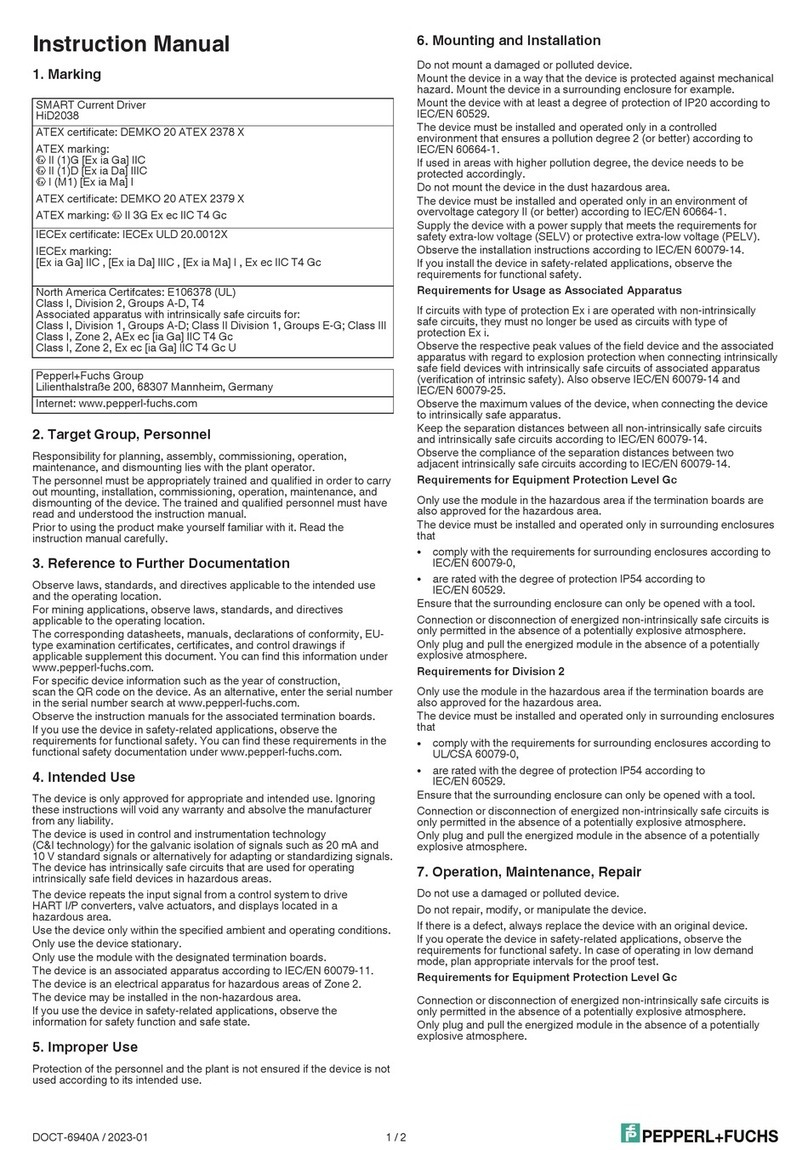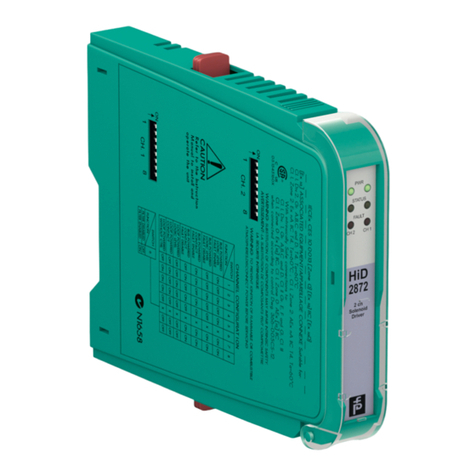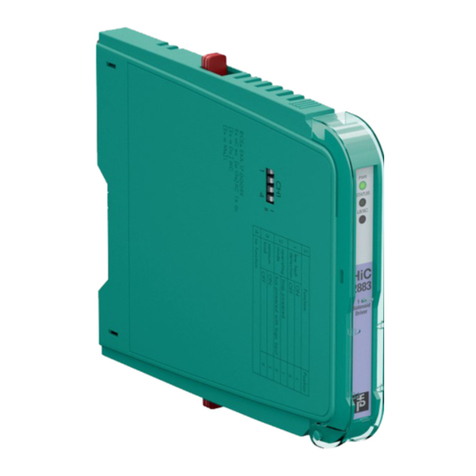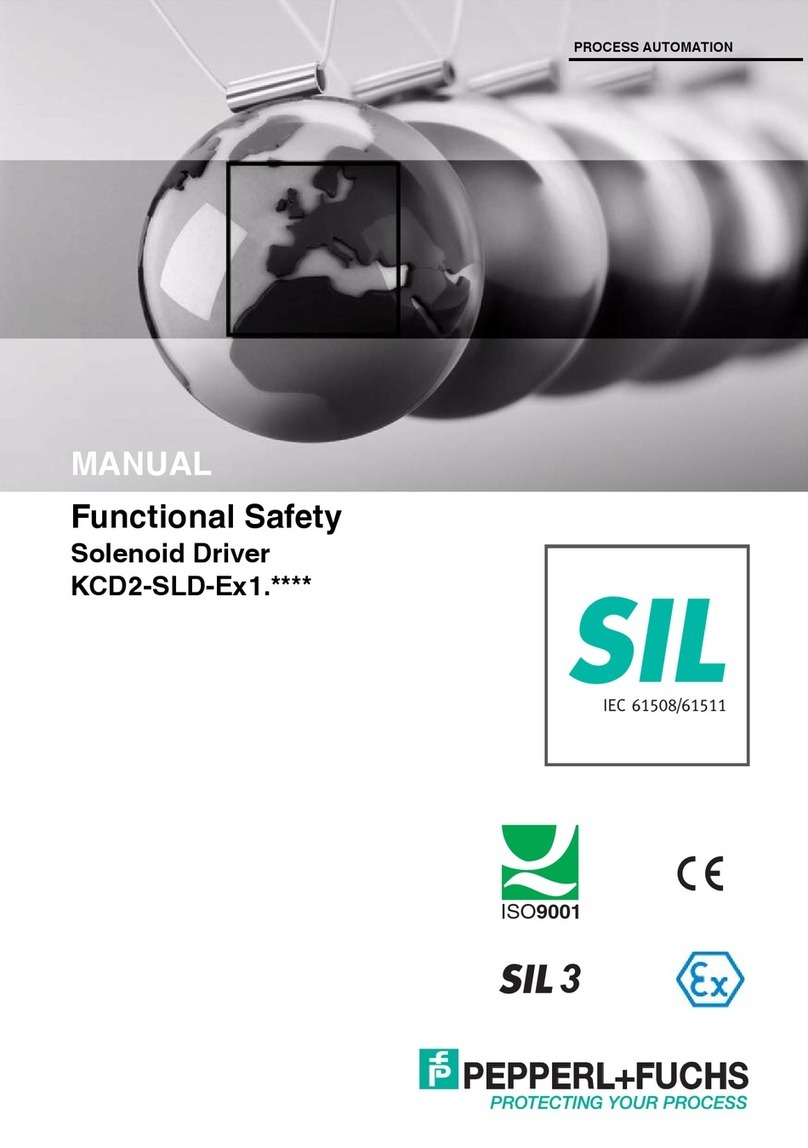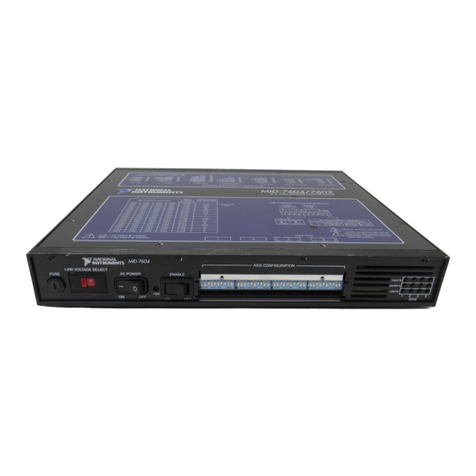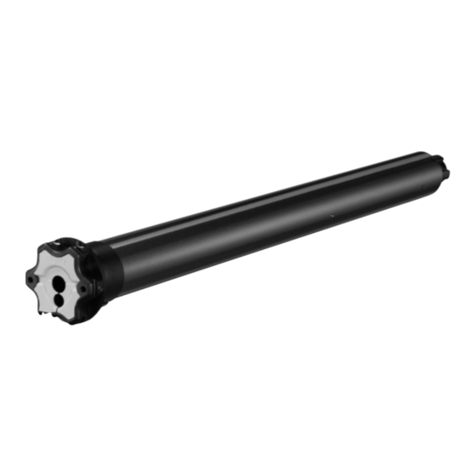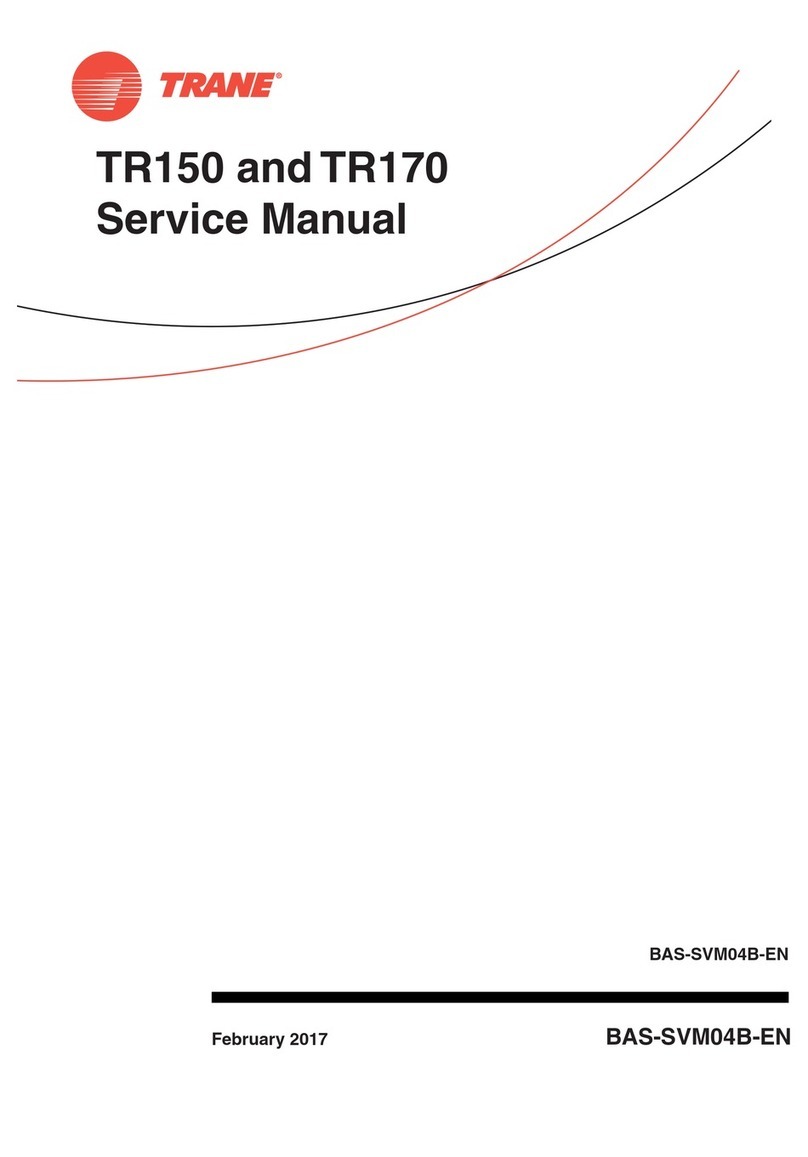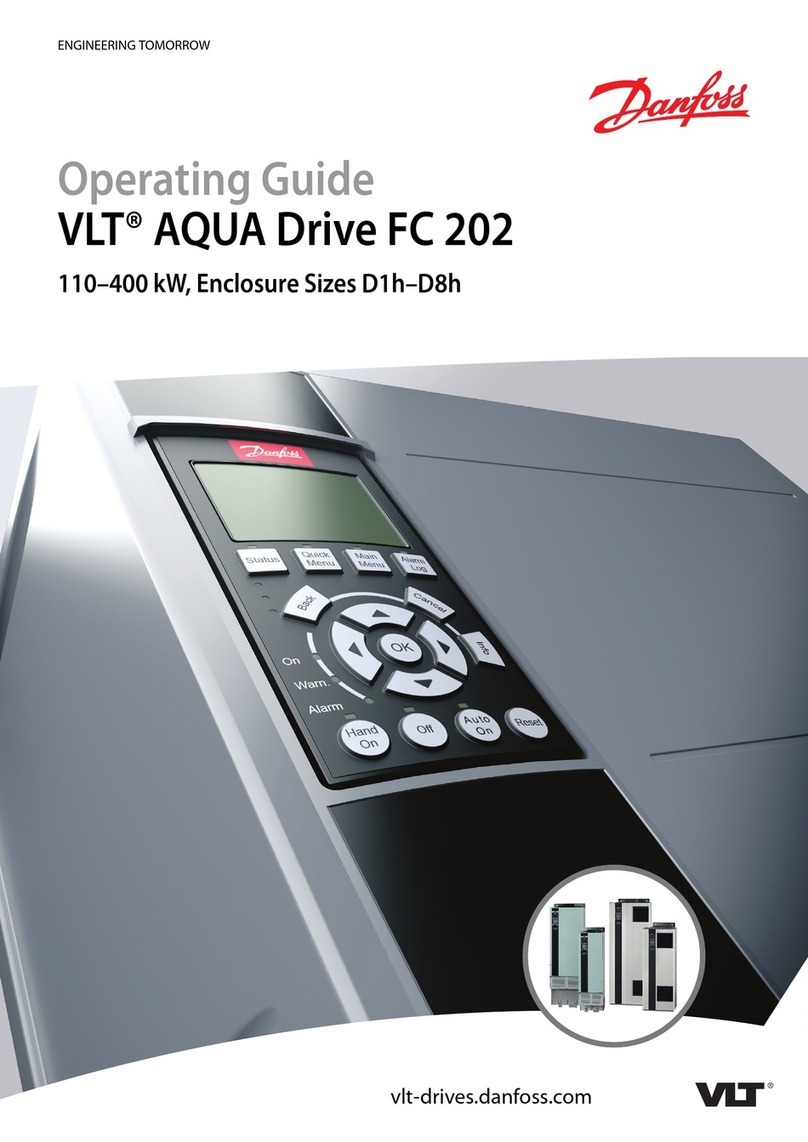
Functional Safety KFD2-SCD2-Ex*.LK, HiD2038
Product Description
2020-06
9
HiD2038
The device repeats the input signal from a control system to drive HART I/P converters,
electrical valves, and positioners located in a hazardous area.
Current transferred across the DC/DC converter is repeated at the terminals 5a, 5b (1a, 1b).
The terminals 5b, 7a (1b, 3b) are used when no short-circuit detection is required.
Line fault detection of the field circuit is indicated by a red LED and an output on the fault bus.
The fault conditions are monitored via a Fault Indication Board.
This device mounts on a HiD Termination Board.
2.3 Interfaces
The device has the following interfaces.
•Safety relevant interfaces:
•Non-safety relevant interfaces: none
The HART communication is not relevant for functional safety.
2.4 Marking
2.5 Standards and Directives for Functional Safety
Device specific standards and directives
System-specific standards and directives
Input I, output I KFD2-SCD2-Ex1.LK
Input I, Input II, output I, output II KFD2-SCD2-Ex2.LK, HiD2038
Note
For corresponding connections see datasheet.
Pepperl+Fuchs Group
Lilienthalstraße 200, 68307 Mannheim, Germany
Internet: www.pepperl-fuchs.com
KFD2-SCD2-Ex1.LK Up to SIL 2
KFD2-SCD2-Ex2.LK
HiD2038
Functional safety IEC/EN 61508, part 1 –7, edition 2010:
Functional safety of electrical/electronic/programmable
electronic safety-related systems (manufacturer)
Functional safety IEC 61511-1:2016+COR1:2016+A1:2017
EN 61511-1:2017+A1:2017
Functional safety –Safety instrumented systems
for the process industry sector (user)
